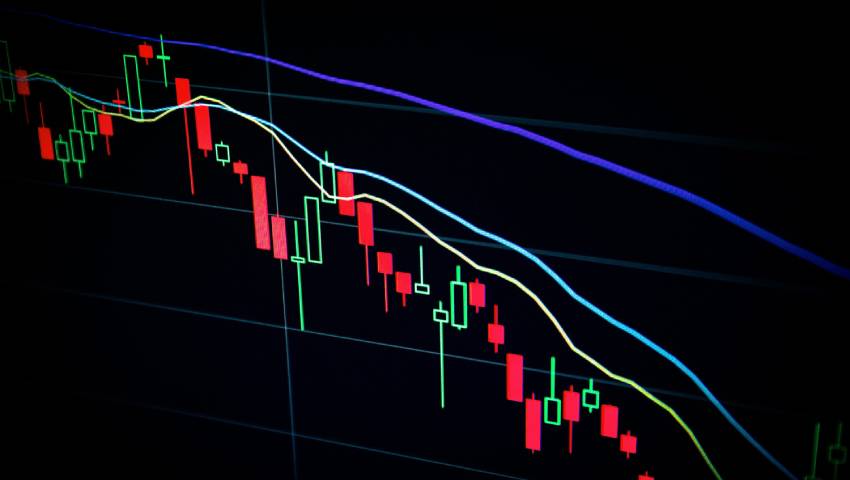
- 09/10/2024
- MyFinanceGyan
- 170 Views
- 5 Likes
- Investment, Share Market
What are the types of technical indicators?
A technical indicator is a mathematical pattern derived from historical data used by technical traders or investors to predict future price trends and make trading decisions. It uses a mathematical formula to derive a series of data points from past price, volume, and open interest data.
A technical indicator is usually shown graphically and compared with the corresponding price chart for analysis. The mechanics of a technical indicator captures the behavior and sometimes the investors’ psychology to provide a clue of future trends of price activity.
Technical indicators offered in technical analysis to predict future price movements include cycle volumes, momentum readings, volume patterns, price trends, Bollinger Bands, moving average, Elliot waves, oscillators, and sentiment indicators. Besides providing valuable insight into the price structure, a technical indicator also shows how to reap potential profits from price movements.
Understanding Technical Indicators:
A technical indicator is generally a mathematically derived representation of data, such as price, volume, or open interest, to detect stock movement. The indicator is weighed based on historically-adjusted returns, common sense, an investor’s objective, and logic to evaluate investments and identify trading opportunities.
Some technical indicators generate signals as stand-alone, while others supplement each other. As elements of technical analysis, they are used to evaluate a security’s strength or weakness by focusing on trading signals, patterns or price movements, and other analytical charting tools. Although there are non-specific technical indicators with regard to the market, some technical indicators are meant to be used for a specific financial market.
Types of Technical Indicators:
- Oscillators: Oscillators are a special subset of technical indicators that oscillates between a local minimum and maximum and focuses on market momentum. They are best used to provide readings of overbought and oversold price movements. Traders and investors define price turns and reversals within ranging markets using oscillators because they swing within a generally defined range. In many cases, technical analysts consider using multiple oscillators on a single chart as redundant because they bear a striking similarity in their mathematical formulas, function, and appearance. Technical analysis uses oscillators, such as relative strength.
- Overlays: Overlays are special types of technical indicators used by traders and investors to identify overbought and oversold levels. They provide insight into the supply and demand of a stock. Commonly used overlays include Bollinger Bands and moving average.
Trend Indicators:
Trend indicators measure the strength and direction of a particular trend by comparing prices to an established baseline. Knowing the strength of a trend is important for a trader to make trading decisions. While using trend indicators, the averaging baseline is formed with one or more average-based indicators. This baseline can be established by considering either the opening or closing price of the stock. A trader can analyze by seeing the price movement in comparison with the baseline.
Most mid and long-term traders use trend indicators as they try to observe the trend performance over a time period. These indicators play a crucial role in analyzing the broader share market, helping traders understand market trends and make informed investment decisions.
An example of a trend indicator is Moving Average. Moving average is an indicator used in technical analysis to gauge the average price of a stock (or any other asset class) over a particular time frame. It is used by traders to determine the trend of a particular stock over the given timeframe.
Momentum Indicators:
Momentum Indicators tend to identify the speed of price movement over a time period by comparing the current closing price to previous closes. As mentioned, closing prices of a stock play an important role. It is because the calculation is done by taking into consideration the difference between the current closing price of a stock and its previous closing price. These indicators help in determining the speed with which a stock price can rise or fall. For example, Relative Strength Index (RSI) is a Momentum indicator. RSI measures the magnitude of stock price changes over a specified period of time in order to evaluate the overbought/oversold conditions in stock.
Volatility Indicators:
Volatility indicators are technical tools used to measure the rate of price movement or the degree of price fluctuation of a particular stock, regardless of its direction. These indicators are generally calculated based on the highest and the lowest historical price data. This helps in determining a defined range in which the price usually fluctuates until the breakthrough happens. Traders can trade within this range and gain profits. Volatility indicators also help to identify the points of reversal in the underlying trend.
The Bollinger Bands are an example of volatility indicators. Bollinger Bands are a type of upper and lower price range levels, also called price envelopes. These envelopes are trendlines plotted at a standard deviation level above and below a Simple Moving Average (SMA) of a security’s price.
Bollinger Bands
Bollinger Bands is a technical analysis tool used to determine where prices are high and low relative to each other. These bands are composed of three lines: a simple moving average (the middle band) and an upper and lower band. The upper and lower bands are typically two standard deviations above or below a 20-period simple moving average (SMA). The bands widen and narrow as the volatility of the underlying asset changes.
John Bollinger, CFA, CMT, has been a major influence in technical analysis and is best known for developing Bollinger Bands in the 1980s. Bollinger combined his background in mathematics and engineering with financial market analysis to create this tool, which uses a moving average and the statistical measure of standard deviation to assess the volatility and trends of stock prices. The tool has since become a staple in technical analysis. He is also the founder of Bollinger Capital Management, a money management company, and has been a prominent commentator and analyst on market conditions.
Other than giving the overbought and oversold conditions, volatility indicators measure the impending market volatility. Traders dealing with derivatives should also stay updated on SEBI’s new rules on derivatives, as regulatory changes can impact market strategies and the application of technical indicators. On the other hand, moving averages are used to determine and measure the strength of a market trend
Common Technical Indicators:
- Accumulation/Distribution Line (A/D Line): The Accumulation/Distribution Line is commonly used to determine a security’s money flow. The A/D line focuses only on the security’s closing price and trading range for the period. A buying interest is shown when the indicator line is trending up, while a falling indicator line shows a downtrend.
- On-Balance-Volume (OBV): On-Balance-Volume (OBV) applies to securities over time, where it measures the flow of trading volume. A rising OBV suggests the buyers’ willingness to enter the market. Conversely, a falling OBV suggests lower prices when selling volume outpaces buying volume. OBV is, therefore, a confirmation indicator for a continuous trend. Traders often use OBV to analyze the buying and selling pressure in different asset classes, including Exchange Traded Funds (ETFs), to identify potential investment opportunities
- Average Direction indicator (ADX): Traders and investors use the Average Direction indicator (ADX) to measure a trend’s strength and momentum. A robust direction strength, either up or down, is in the offing when the ADX is above 40. A weak trend or non-trending is suggestive when the indicator is below 20.
- Moving Average Convergence Divergence (MACD): Traders use Moving Average Convergence Divergence (MACD) to see the direction and momentum of a trend that provides different trade signals. When the price is on an upward phase, the MACD is above zero, while a below-zero MACD is suggestive of a bearish period.
Combining Multiple Technical Indicators:
Technical analysts analyze technical indicators independently to perceive possible changes in the behavior of each indicator. The structural changes within the various financial markets render the behavior of some technical indicators substantial.
For this reason, there are overwhelming combinations of technical indicators. Some combinations are complex to understand and work with, while other combinations prove easy, especially when weights are assigned to each indicator.
An example of a technical indicator combination is the Commodex Trend Index. The Commodex Trend Index incorporates other subjective forms of technical analysis, such as crossovers of a fast and slow-moving average, liquidation, open interest, and volume momentum.
Please note,
The views in the article/blog are personal and that of the author. The idea is to create awareness and for educational purpose and not intended to provide any product recommendations.



